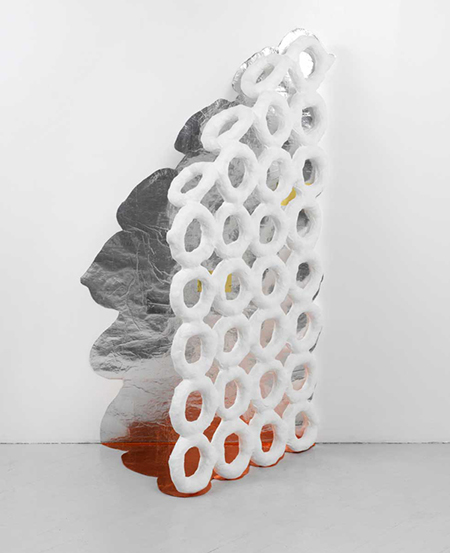
Continuing through April 24, 2016
In “Dianna Frid & Richard Rezac: Split Complementary,” artist-curator Matthew Girson brings together two established Chicago artists whose pieces — as the title suggests — exhibit well together. Both artists do commingle materials of all kinds with ease; however, “Split Complementary” is a showcase for two seemingly opposite approaches to craftsmanship. Frid’s expressive, tactile works of textural fabrics, and the telltale bumps and gaps of handiwork, contrast with Rezac’s colder, more detached sculptures with high-gloss finishes and impeccably precise edges. One artist celebrates the imperfections of the visible hand of the artist, and the other, the exquisite perfection of an invisible one.
Both artists’ practices are quite formalist, though varying degrees of representation lead a viewer toward meaning. In Rezac’s works, a viewer might recognize, for example, the suggestion of a turned table or chair leg in the perfectly cast, perfectly patinaed bronze of “Web.” Frid, on the other hand, uses text both in the titles and as visual elements to suggest her philosophical explorations, as in “Be Made of Laughing Particles (After Lucretius).” The artists again are set at opposing ends of a spectrum with Rezac’s mastery of weighty, classical mediums reinterpreting the ordinary, in contrast to Frid’s deployment of modest, everyday materials in the cause of lofty content. Still, this pattern of dichotomies — cool and warm, sleek and tactile, refined and common — isn’t the end-all motif of the exhibition. Amongst Frid’s and Rezac’s works Girson has placed items from DePaul Art Museum’s permanent collection. Artifacts like a woven, disk-like hat or a worm-eaten manuscript widen our understanding of “Split Complementary;” this show is not just about contemporary art practices, but references a whole history of object-making and how meaning can shift over time and through context.
